Photographs: Mukesh Gupta/Reuters Business Standard
The rupee is depreciating for one and one reason only: the daily demand for dollars resulting from a massive current account deficit is simply not being met by what people in the rest of the world are willing to invest in or lend to the country.
Recent measures by the Reserve Bank of India and the Securities and Exchange Board of India are being seen by observers as an attempt to reverse the inexorable decline of the rupee.
Some of them see these measures as too little, too late.
Others are more of the view that anything that can be done must be done; this is no time for squeamishness or purism.
Admittedly, these moves -- essentially attempts to impose limits on potentially speculative positions by banks and other market participants, which could reinforce the downward pressure -- do appear to be rather skimpy.
. . .
Why measures to arrest rupee fall are not enough
Image: An employee sorts rupee notes at a cash counter inside a bank in Agartala, Tripura.Photographs: Jayanta Dey/Reuters
A further measure being considered, which was reported in this newspaper on Wednesday, is that the oil marketing companies change their usual practice of buying foreign exchange through multiple banks to using a single bank for their daily purchases.
The earlier practice tended to exaggerate demand conditions, because all the intermediary banks would enter the market.
In situations of low and erratic supply, the impact on prices could be quite significant. Could this make a dramatic difference?
All these measures, and undoubtedly some more to follow, will make a little bit of difference for a little bit of time.
. . .
Why measures to arrest rupee fall are not enough
Image: A bank employee counts bundles of rupee notes at a cash counter in Agartala, Tripura.Photographs: Jayanta Dey/Reuters
But realistically none of them, even the suggestion that a special window for foreign exchange purchases be opened for the oil companies so that their demand is taken off the market, adds up to an enduring solution to the problem of rupee depreciation.
The rupee is not depreciating because trading margins in the futures and options are too low, or banks are doing aggressive proprietary trading, or, for that matter, oil companies are forced to buy from the market and not given special access.
The rupee is depreciating for one and one reason only: the daily demand for dollars resulting from a massive current account deficit is simply not being met by what people in the rest of the world are willing to invest in or lend to the country.
. . .
Why measures to arrest rupee fall are not enough
Image: A cashier counts rupee notes inside a bank in Amritsar.Photographs: Munish Sharma/Reuters
Unless this fundamental driver is acknowledged, which it certainly is, and acted upon, which unfortunately isn’t being done sufficiently, no amount of tinkering around the edges is going to achieve the objective of stabilisation.
Does that mean that these measures are entirely cosmetic?
Not necessarily.
Restricting speculative channels and other administrative measures certainly do have a role to play in managing the exchange rate.
This is a market in which expectations of further depreciation can completely counteract positive structural developments at least for some period of time.
. . .
Why measures to arrest rupee fall are not enough
Image: A cashier counts rupee notes inside a bank in Lucknow.Photographs: Pawan Kumar/Reuters
Reducing speculative activity serves the purpose of containing such expectations from impacting buying and selling decisions, thereby allowing any positive fundamentals in the picture time to exert their influence on the exchange rate.
Of course, for this to happen, positive fundamentals have to emerge.
From the viewpoint of the current account deficit, two promising developments are the sharp decline in gold imports and the resumption of iron ore mining in Karnataka, which can translate into higher exports.
But these are not enough.
More such outcomes need to be seen and, more importantly, need to be sustained.

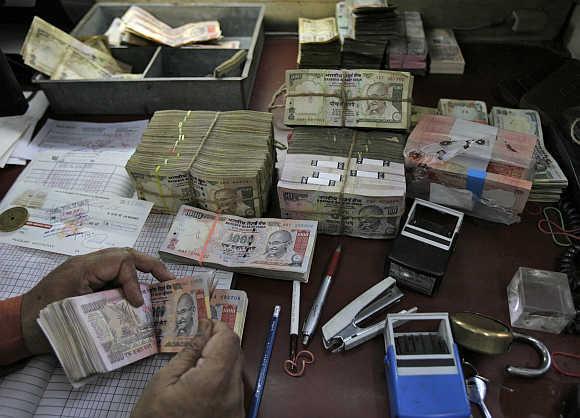
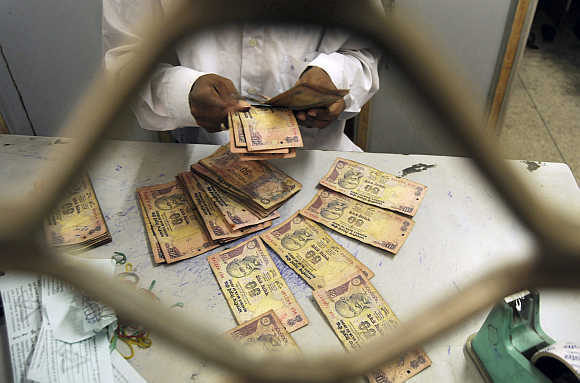
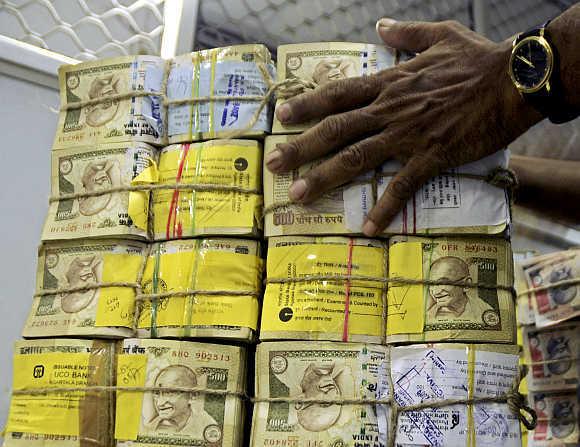
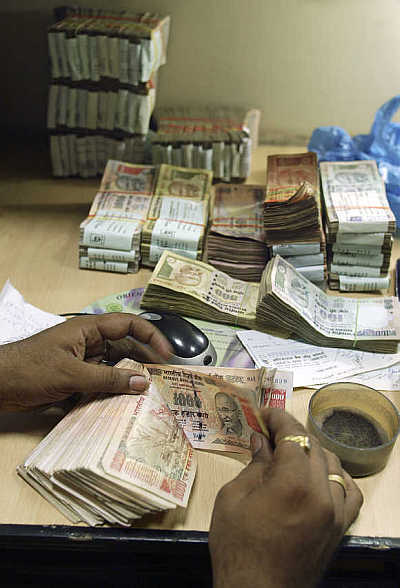
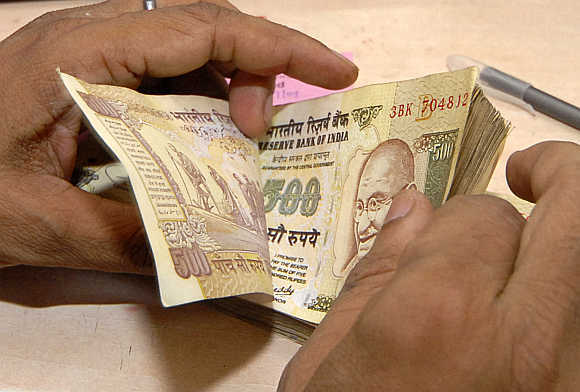

article